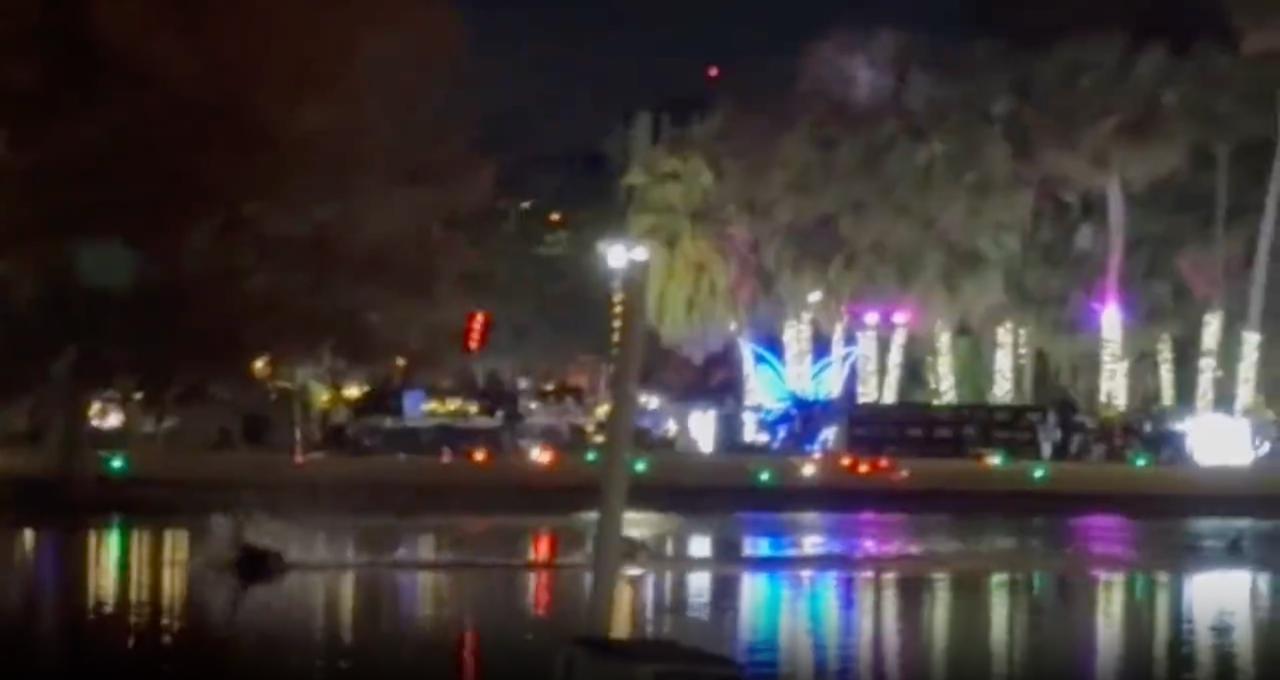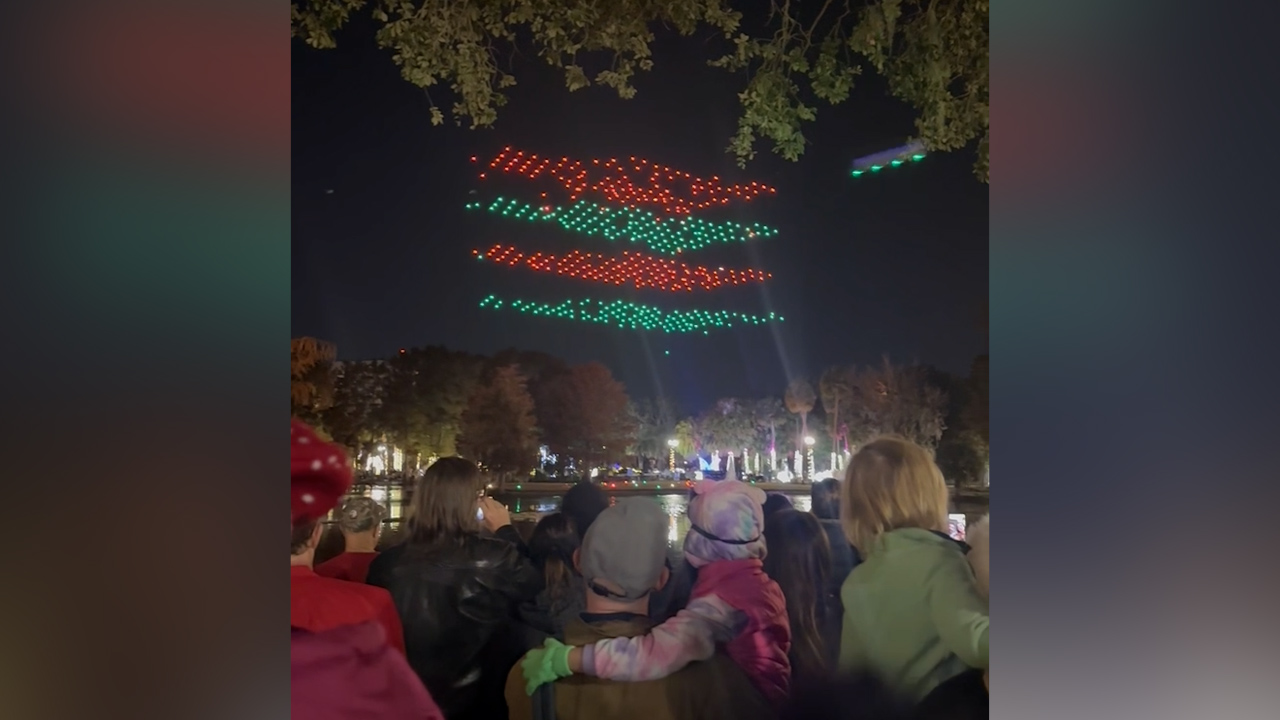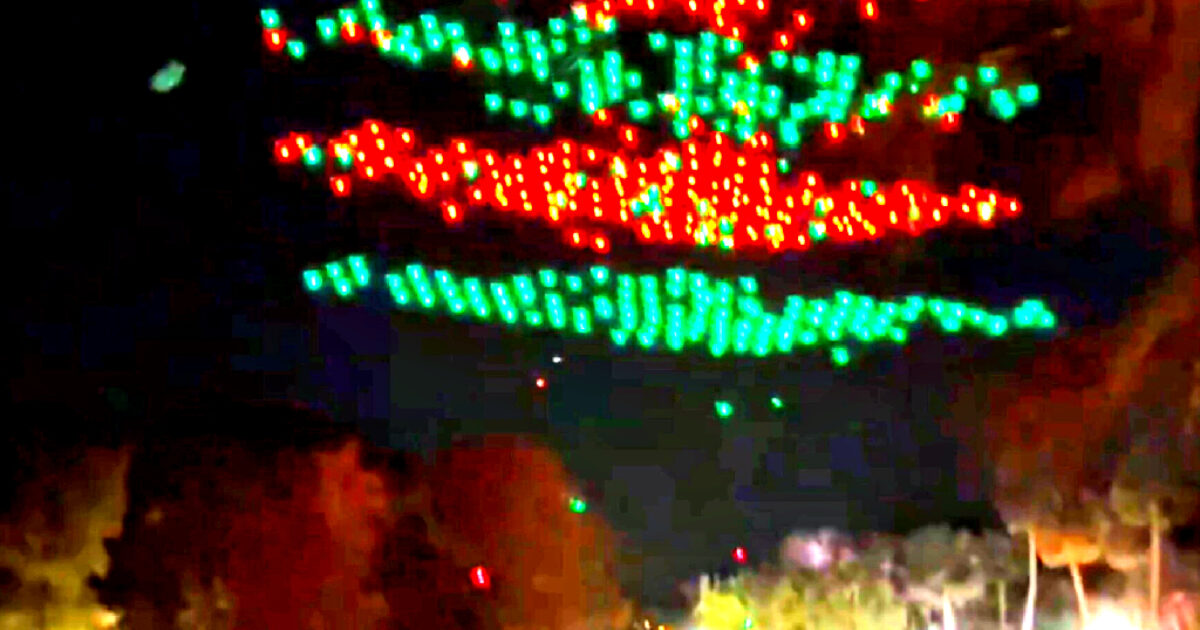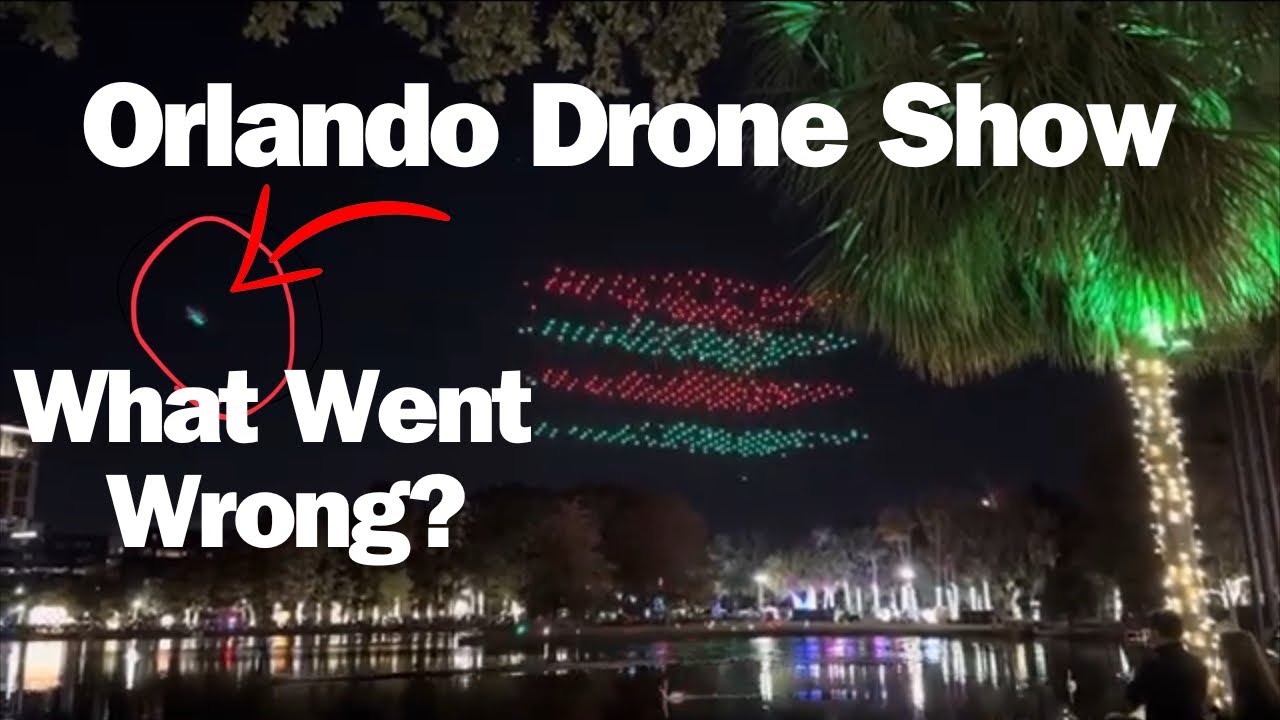Orlando drone show malfunction: A spectacular light show turned chaotic when a swarm of drones experienced a massive technical failure. This event, witnessed by hundreds, raises critical questions about safety protocols, technological reliability, and the future of large-scale drone displays. We’ll delve into the incident’s timeline, exploring the technical glitches, audience reactions, and the resulting regulatory and legal implications.
That Orlando drone show malfunction got everyone talking about drone reliability, right? It makes you wonder about the logistics of large-scale drone operations, like checking out the planned amazon drone delivery locations and how they’re ensuring safety and avoiding similar issues. Hopefully, Amazon’s learned from past incidents to prevent any major mishaps during their deliveries.
We’ll also look at what improvements can be made to prevent similar occurrences.
This article provides a comprehensive overview of the incident, examining the sequence of events, potential causes, and the impact on spectators and public perception. We analyze the technical aspects of the malfunction, considering software, hardware, and environmental factors, and discuss the safety measures in place and their effectiveness (or lack thereof). Finally, we explore the legal implications and propose technological improvements and preventative measures to avoid future incidents.
The Orlando Drone Show Malfunction
The Orlando drone show incident, while initially a spectacle of light and technology, quickly turned into a cautionary tale about the complexities and potential pitfalls of large-scale drone displays. This article delves into the event, examining its technical aspects, impact on the audience, regulatory implications, and potential improvements for future drone shows.
The Orlando Drone Show Incident: A Detailed Account, Orlando drone show malfunction

The incident involved a significant malfunction during a planned drone light show over Orlando, Florida. While the exact number of drones involved varies in reports, a substantial portion of the fleet experienced simultaneous issues. The initial phase of the show proceeded smoothly, with thousands of drones creating mesmerizing aerial patterns. However, approximately halfway through, a large number of drones began to deviate from their programmed flight paths, resulting in erratic movements and some crashes.
Hey, so you heard about that Orlando drone show malfunction? Things went sideways pretty quickly, leading to a full-blown orlando drone show accident , which, thankfully, didn’t involve any serious injuries. The malfunction itself is still under investigation, but early reports point towards a possible software glitch causing the drones to behave erratically. We’ll keep you updated as we learn more about the Orlando drone show malfunction and its causes.
This occurred within a relatively short timeframe, creating a chaotic scene both in the air and for the audience below.
The malfunction manifested as a loss of coordinated flight, with drones appearing to lose connection with the central control system. Many drones descended erratically, while others remained aloft but in disarray. The exact timeline is still being investigated, but reports suggest the event unfolded within minutes, transforming a breathtaking display into a confusing and potentially alarming situation for the spectators.
The immediate impact was a sudden halt to the show, leaving the audience with a sense of confusion and, for some, concern for safety.
Technical Aspects of the Malfunction

Several potential causes for the drone malfunction are being considered. Software glitches in the flight control system, hardware failures within individual drones, or interference from external factors like radio frequency congestion are all possibilities. The flight control system likely relied on GPS, communication links, and sophisticated algorithms to coordinate the movements of the drones. Limitations in any of these components could have contributed to the loss of control.
While precise details about the specific safety protocols are unavailable publicly, it’s likely that redundancy and fail-safe mechanisms were in place. However, their effectiveness in this instance was clearly compromised.
| Planned Safety Measure | Actual Response |
|---|---|
| Redundant communication systems | Likely failed or insufficient to maintain control |
| Emergency landing protocols | Partially effective; some drones landed safely, others crashed |
| Real-time monitoring and intervention | Overwhelmed by the scale of the malfunction |
Impact on Spectators and Public Perception
Audience reactions ranged from confusion and concern to outright disappointment. Anecdotal accounts describe a shift from awe and wonder to a sense of unease as the drones began to behave erratically. The sudden cessation of the show left many feeling cheated out of a planned spectacle. The impact on the organizers’ and involved companies’ reputation is significant, potentially leading to damage to their credibility and future projects.
The long-term effect on public trust in drone shows could be substantial, raising concerns about safety and reliability.
Regulatory and Legal Implications
Drone shows are subject to various regulations concerning airspace usage, safety protocols, and operator licensing. A thorough investigation is needed to determine if any regulations were violated. Potential legal ramifications could include fines, suspensions of operating licenses, or even lawsuits from spectators who suffered losses or injuries. The investigation will need to determine the cause of the malfunction and assess the responsibility of the involved parties.
That Orlando drone show malfunction got me thinking about drone safety. It’s a reminder that even with advanced tech, things can go wrong, like that time a drone crashed in Paris – check out this article about it: drone crash paris. The Paris incident highlights the need for rigorous testing and fail-safes, something clearly lacking in the Orlando show’s apparent malfunction.
Technological Improvements and Preventative Measures
Several technological and procedural improvements could mitigate the risk of future malfunctions.
- Improved redundancy in communication and control systems.
- Enhanced GPS and inertial navigation systems for improved positional accuracy.
- More robust software with fail-safe mechanisms.
- More sophisticated real-time monitoring and intervention capabilities.
Enhanced safety protocols are crucial.
- More rigorous pre-flight checks and system testing.
- Development of improved emergency landing procedures.
- Establishment of clear communication protocols between operators and authorities.
- Implementation of a comprehensive risk assessment process.
Comparative Analysis of Similar Incidents

While the Orlando incident is significant, it’s not unique. Other drone show malfunctions have occurred globally, highlighting recurring themes in causes and responses. Analyzing these past events can help identify common patterns and inform preventative measures.
| Incident | Cause | Consequences | Response |
|---|---|---|---|
| Example Incident 1 (Location, Date) | Software glitch | Partial loss of control, minor damage | Software update, improved testing |
| Example Incident 2 (Location, Date) | Hardware failure | Several drone crashes | Improved hardware design, stricter maintenance |
Illustrative Descriptions of the Scene

Before the malfunction, the show was a breathtaking display of synchronized light and movement. Thousands of drones formed intricate patterns against the darkening sky, creating a spectacle of color and motion. The visual spectacle was complemented by a carefully choreographed soundtrack. The malfunction itself was jarring. The once-coordinated movements became erratic and chaotic, with drones descending unexpectedly, creating a sense of disarray.
The sudden silence, punctuated by the occasional thud of a crashing drone, added to the unsettling atmosphere. The immediate aftermath was a mixture of relief and disappointment. Cleanup crews began to clear the area, while the audience slowly dispersed, many still in shock or discussing what they had witnessed.
Conclusion
The Orlando drone show malfunction serves as a stark reminder of the inherent risks involved in large-scale drone operations. While drone shows offer breathtaking spectacles, ensuring public safety and preventing technical failures must remain paramount. This incident highlights the urgent need for robust safety protocols, improved technology, and stricter regulations to prevent future mishaps. By learning from this event, we can pave the way for safer and more reliable drone shows in the future, maintaining the wonder while mitigating the risks.
Query Resolution: Orlando Drone Show Malfunction
What type of drones were used in the show?
The specific model of drones used has not yet been publicly released.
Were there any injuries reported?
No injuries to spectators or personnel were reported.
What was the estimated cost of the damage?
The financial impact on the organizers and involved companies is still being assessed.
What is the FAA’s response to the incident?
The FAA is currently investigating the incident and will likely issue a report with recommendations.
